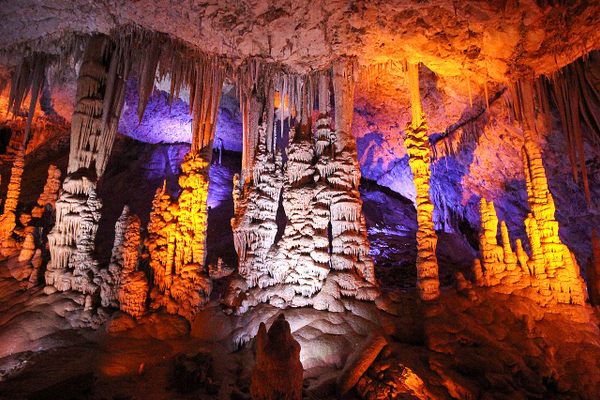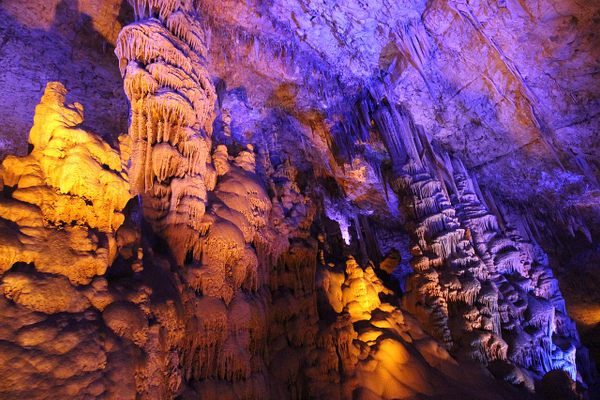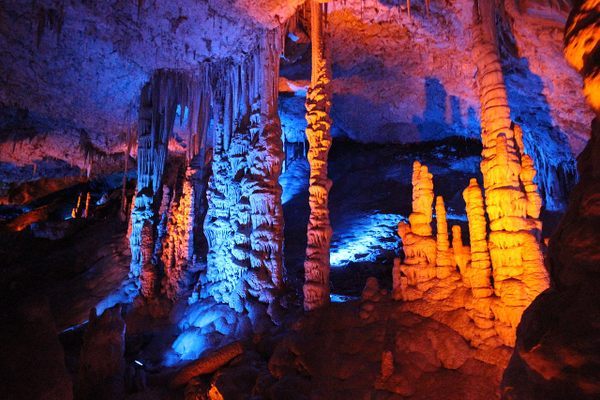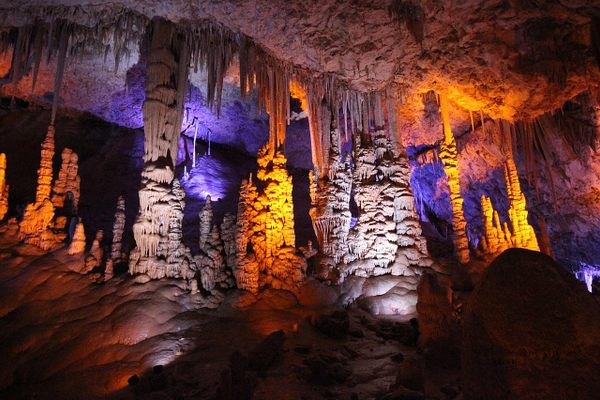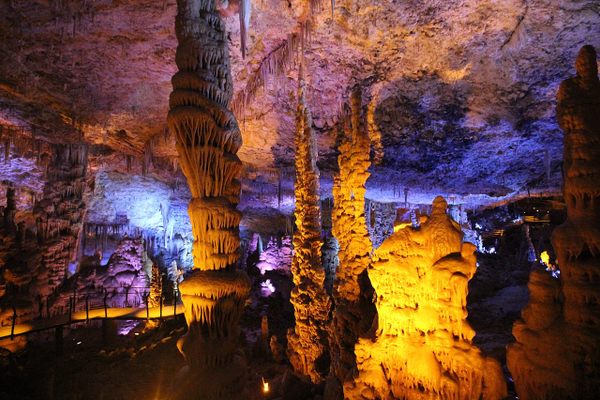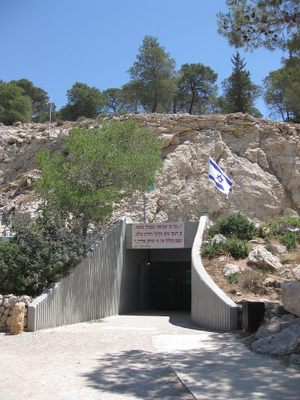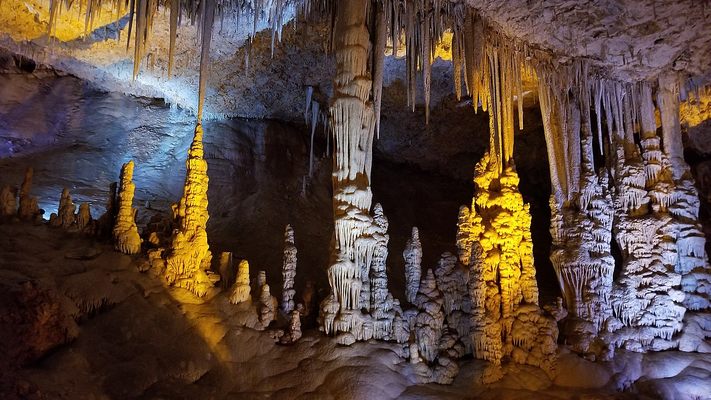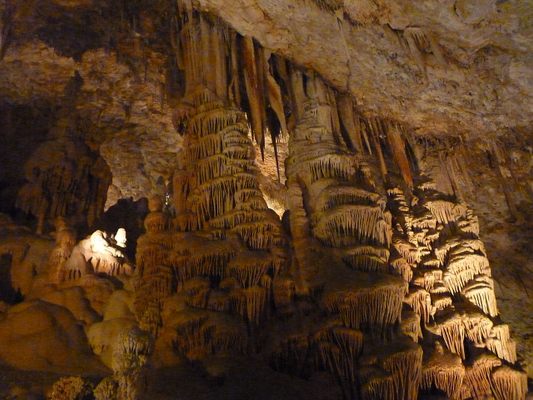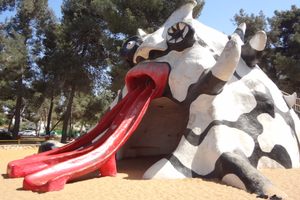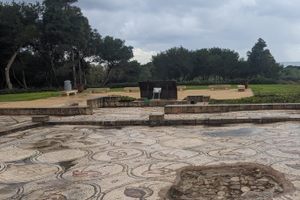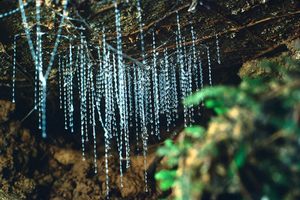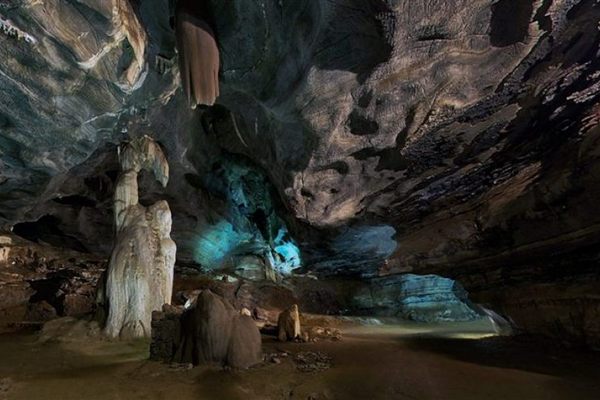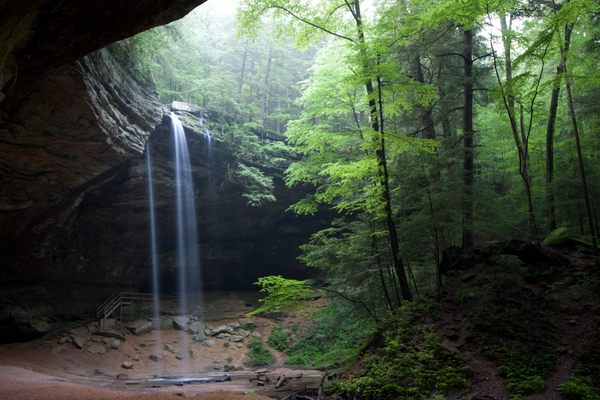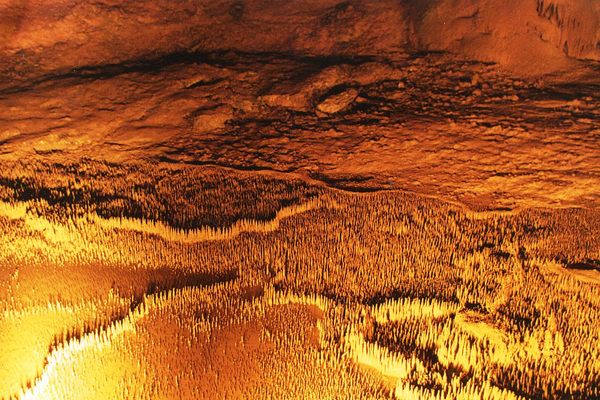About
In May 1968, workers at the Hartuv quarry in the Judean Hills were quarrying with explosives. Each blast was much like the one before, until a strange gap opened up in the rock face. Peering inside, the men discovered a large cave, its roof dripping with stalactites, the oldest of which would later be dated to around 300,000 years old.
After its discovery, local authorities decided to keep the cave a secret, fearing the ancient formations would be damaged if it were opened to the public. Seven years later, on March 16, 1975, the cave was declared a nature reserve and its secrets were revealed.
The Avshalom Cave, also known as the Soreq Cave, has since become one of Israel’s most incredible natural wonders. From the roof of the 50,000-square-foot cavern hangs a forest of stalactites, the largest more than 13 feet long, slowly formed over millennia by the slow dripping of water through cracks in the ceiling. Rising up from the floor beneath them are a series of towering stalagmites, while some stalactites and stalagmites have joined to form pillars.
The result is a strange subterranean world of bizarre formations, with organic-looking shapes that resemble coral reefs and tentacles. Other formations have been compared to a whole range of objects: elephant ears, ice cream cones, the Lion King, and the U.S. Capitol Building.
The whole effect has been made even more trippy since the installation of a modern lighting system. For years, the cave was illuminated by the white light of automobile headlamps. This, however, triggered photosynthesis and the algae inside the cave began to grow, threatening to cover the bare rock formations in a uniform smudge of dark green moss. The park officials then tried using ultraviolet light at night to kill the algae, but the algae eventually developed an immunity to UV light.
In 2012, a new anti-algae tactic was employed. A lighting system was installed that used only a limited part of the color spectrum, with shifting shades of orange, blue and green. Not only did this help to control the algae, it also gave the cave an otherworldly appearance that made the whole experience all the more memorable.
At the time, some park officials had mixed feelings about the new lighting, worrying it would detract from the cave’s natural beauty. Boris Kripak, a Russian-born archaeologist who worked at the cave, told the Los Angeles Times: “We don’t want to turn the cave into a discotheque.” But he also admitted that the shifting colors, which range from bright orange to deep purple, had given new life to the ancient cavern, saying “It’s like the cave is breathing.”
Related Tags
Know Before You Go
Avshalom Cave, also known as Soreq Cave, is located on the western side of Mt. Ye'ela in the Judean Hills in Israel, about 12 miles west of Jerusalem. It is located inside the Stalactite Cave Nature Reserve. Public transport directly to the reserve is limited, but you can head to nearby Bet Shemesh by bus or by train and take a taxi to the cave from there. Guided tours can be arranged at the cave; for guided tours in English, check ahead for the schedule. The standard entrance fee is 28 ILS for adults ($8 US) and 14 ILS for children ($4). Opening hours change between summer and winter, and for holidays. You can check the hours at the Israel Nature and Parks Authority website.
Published
December 9, 2019
Sources
- https://sareltours.com/article/the-soreq-cave
- https://www.israel-in-photos.com/avshalom-cave.html
- https://www.parks.org.il/en/reserve-park/stalactite-cave-nature-reserve/
- https://www.jewishvirtuallibrary.org/soreq-cave-and-avshalom-reserve
- https://www.latimes.com/world/la-xpm-2012-sep-18-la-fg-israel-cave-20120918-story.html
- http://allaboutjerusalem.com/article/soreq-cave-stalactite-cave-nature-reserve
